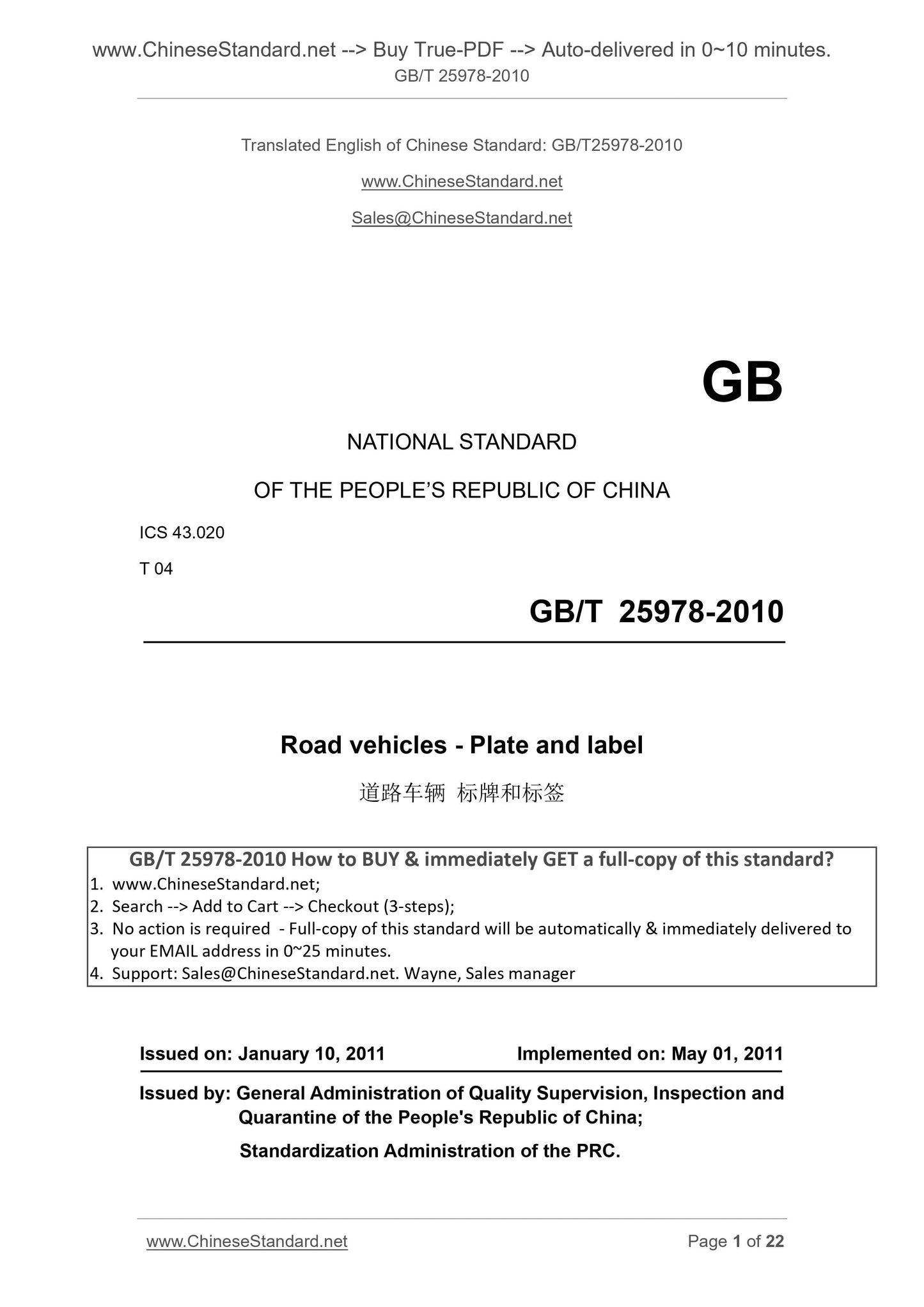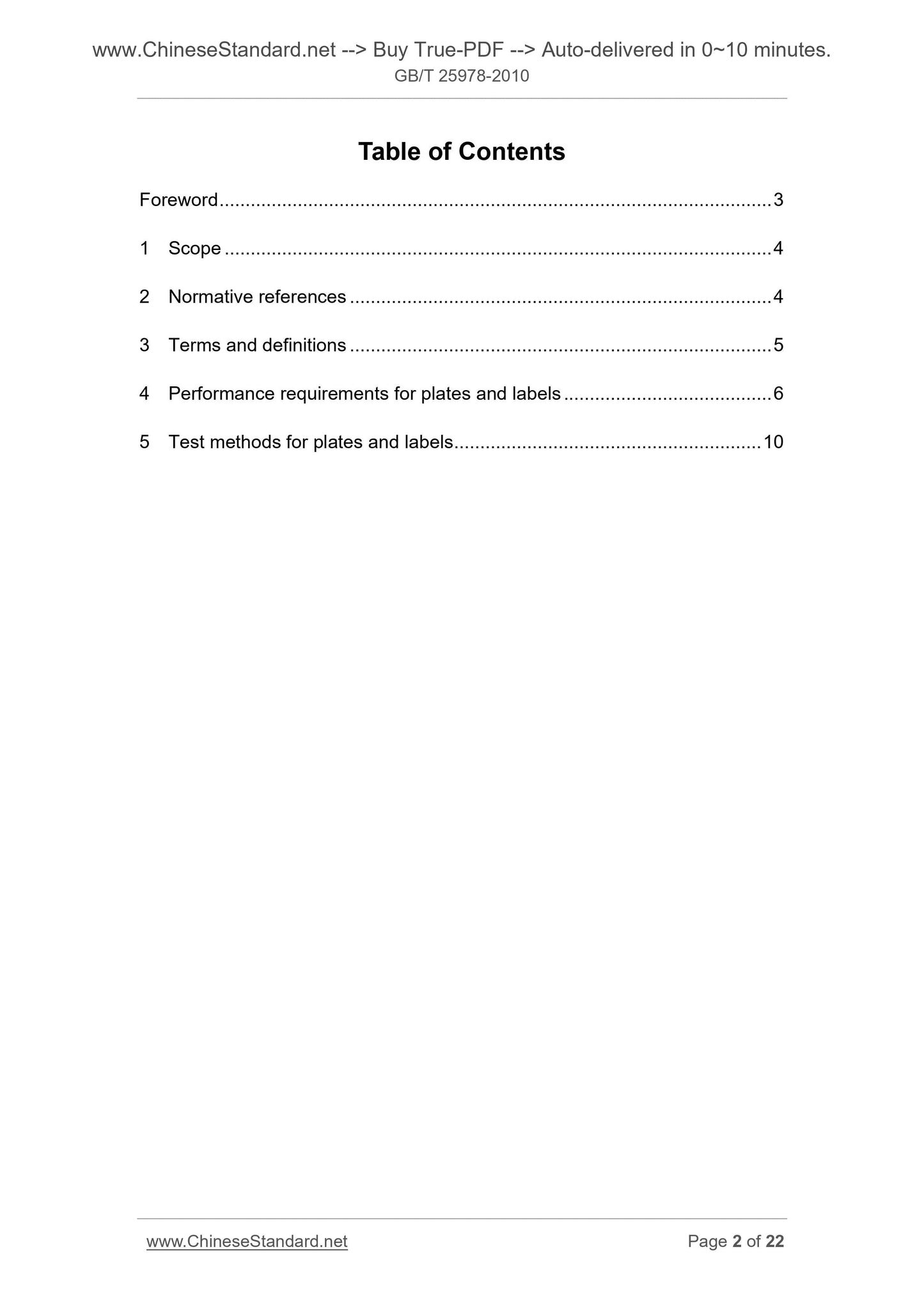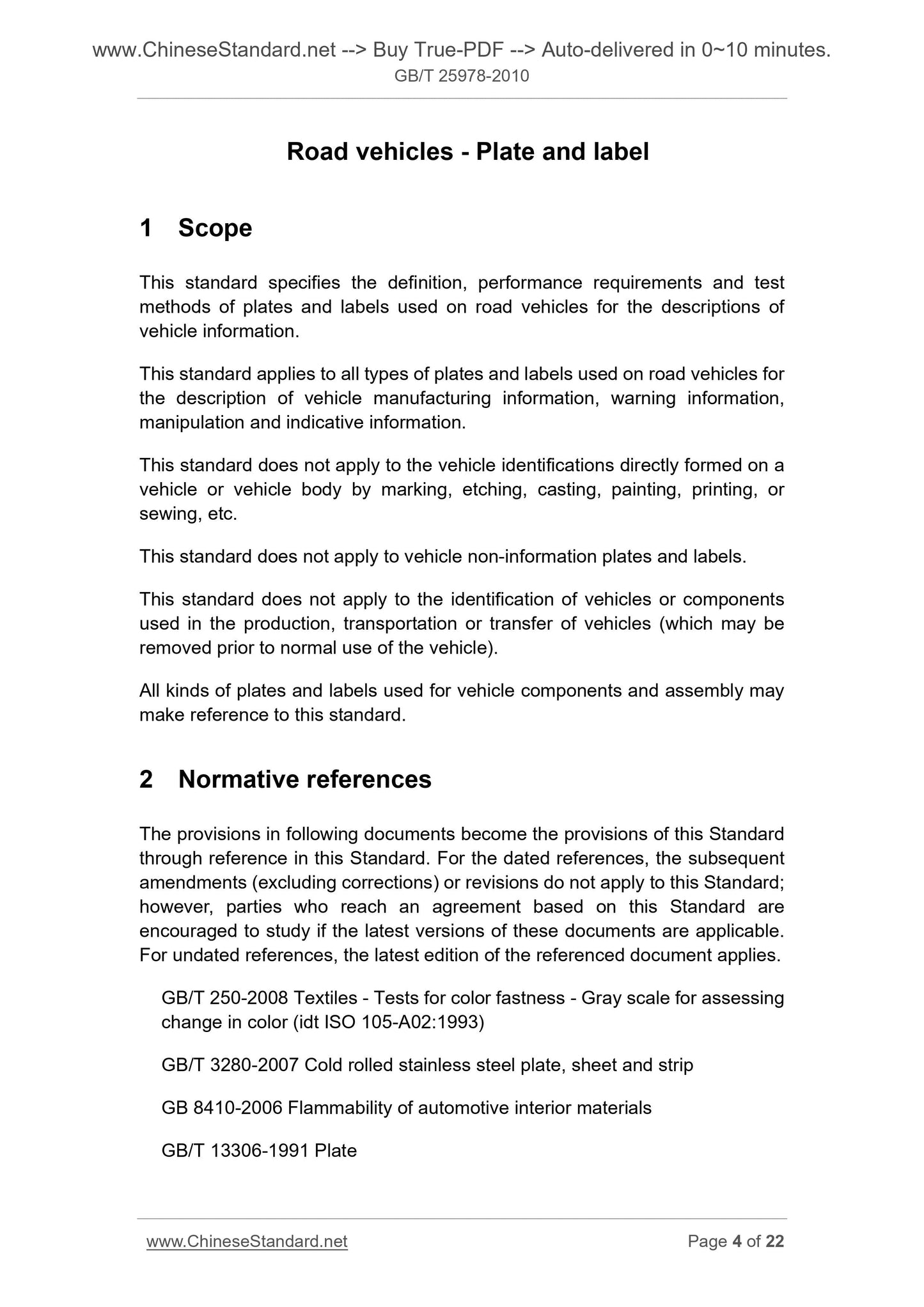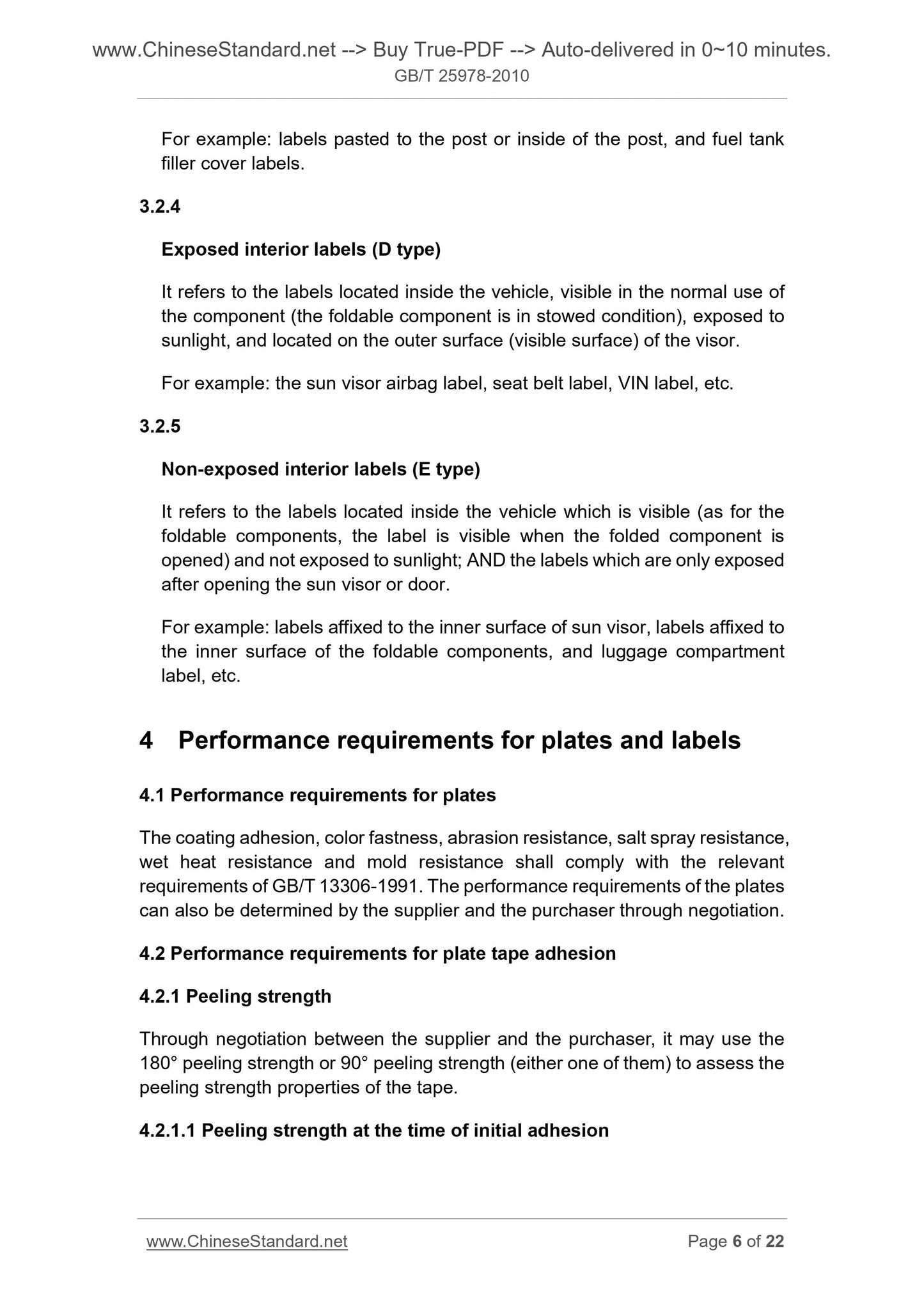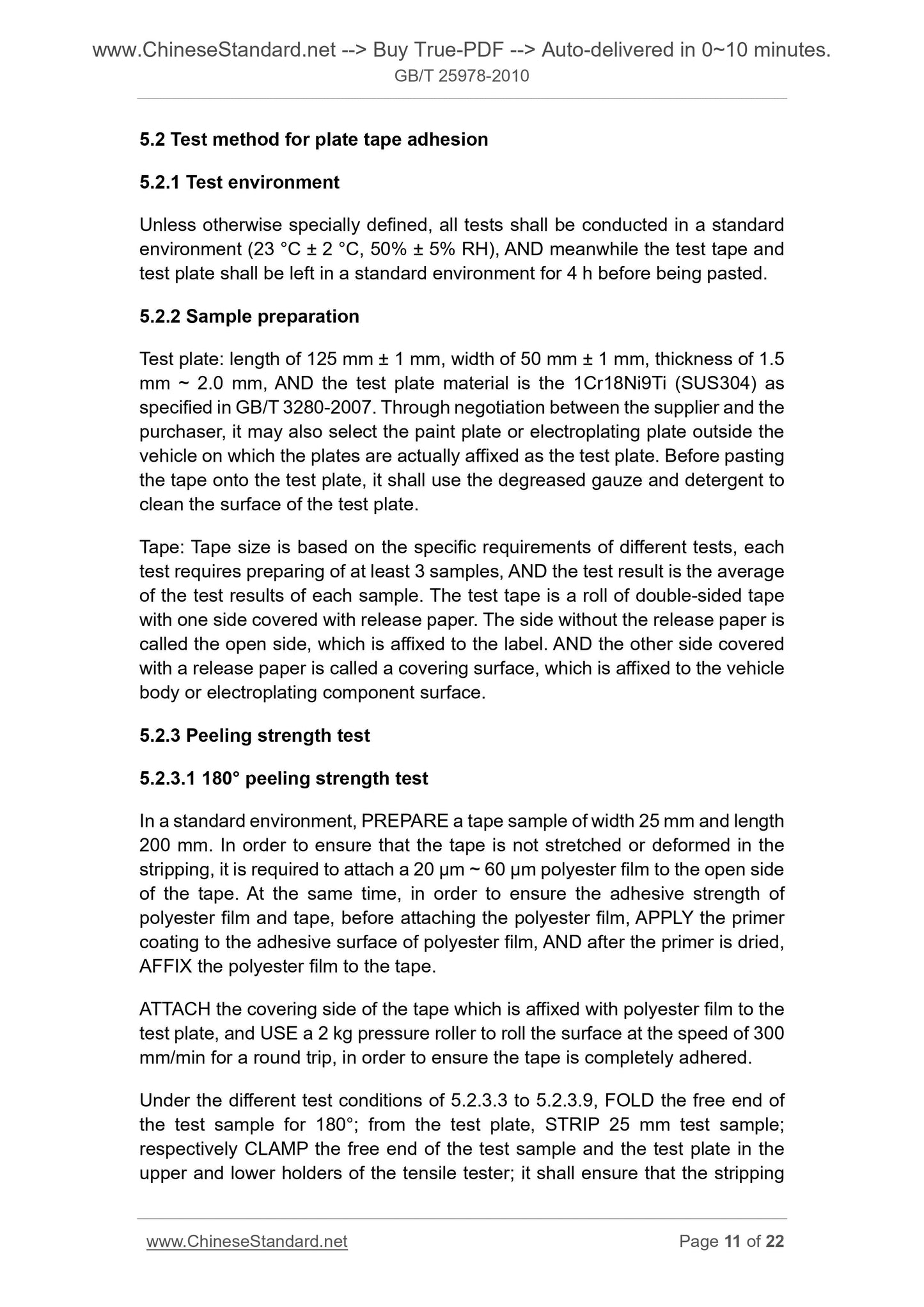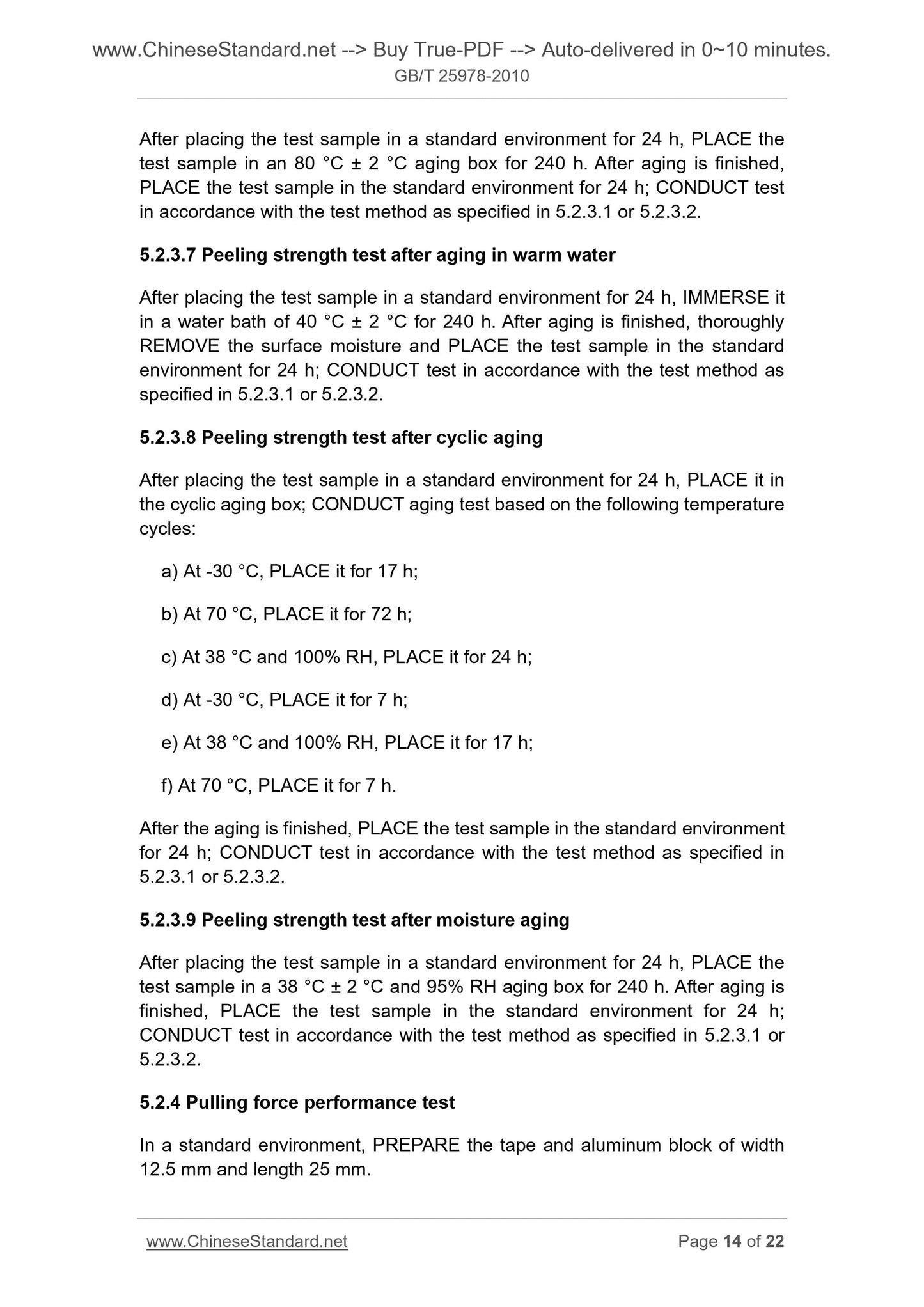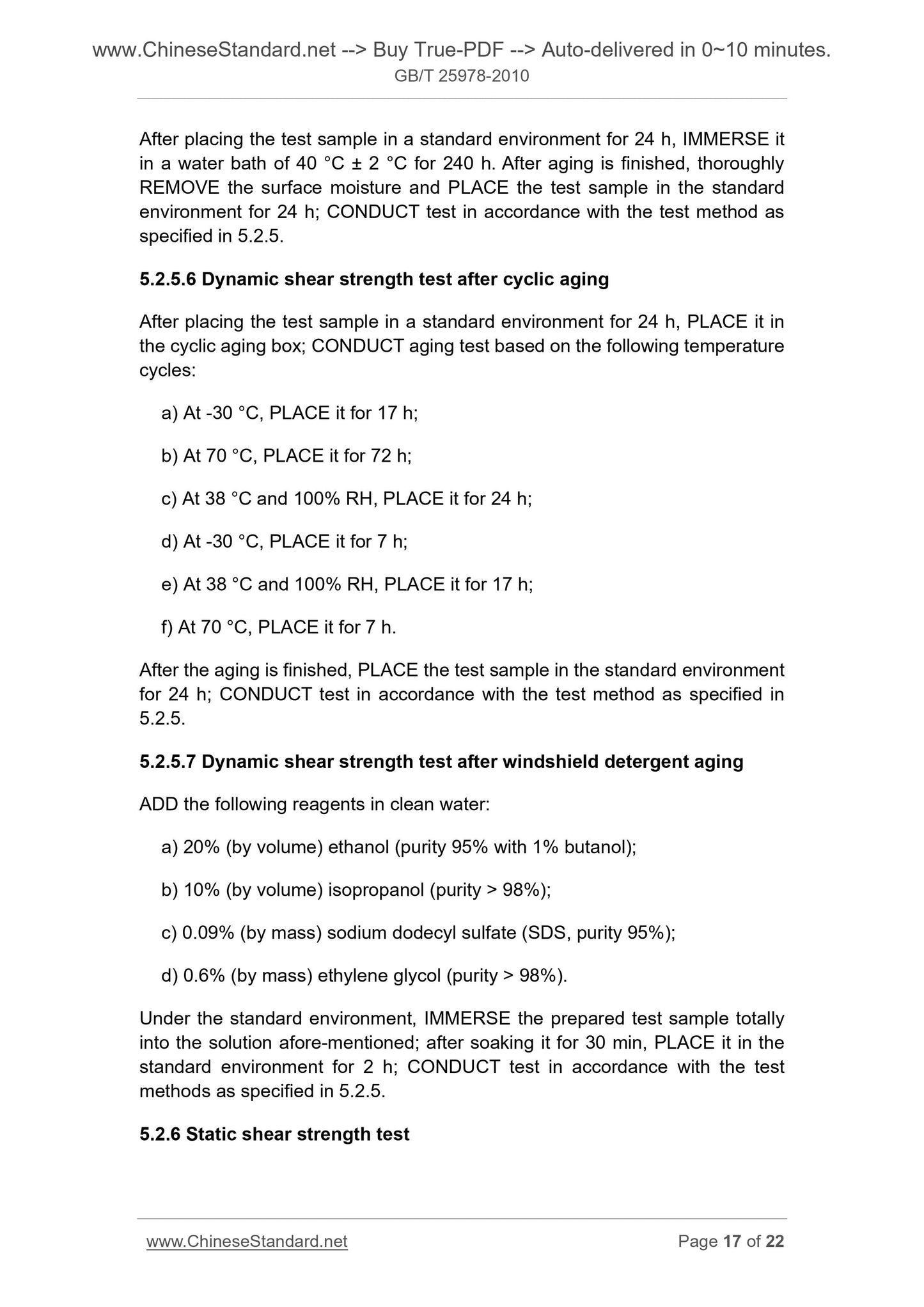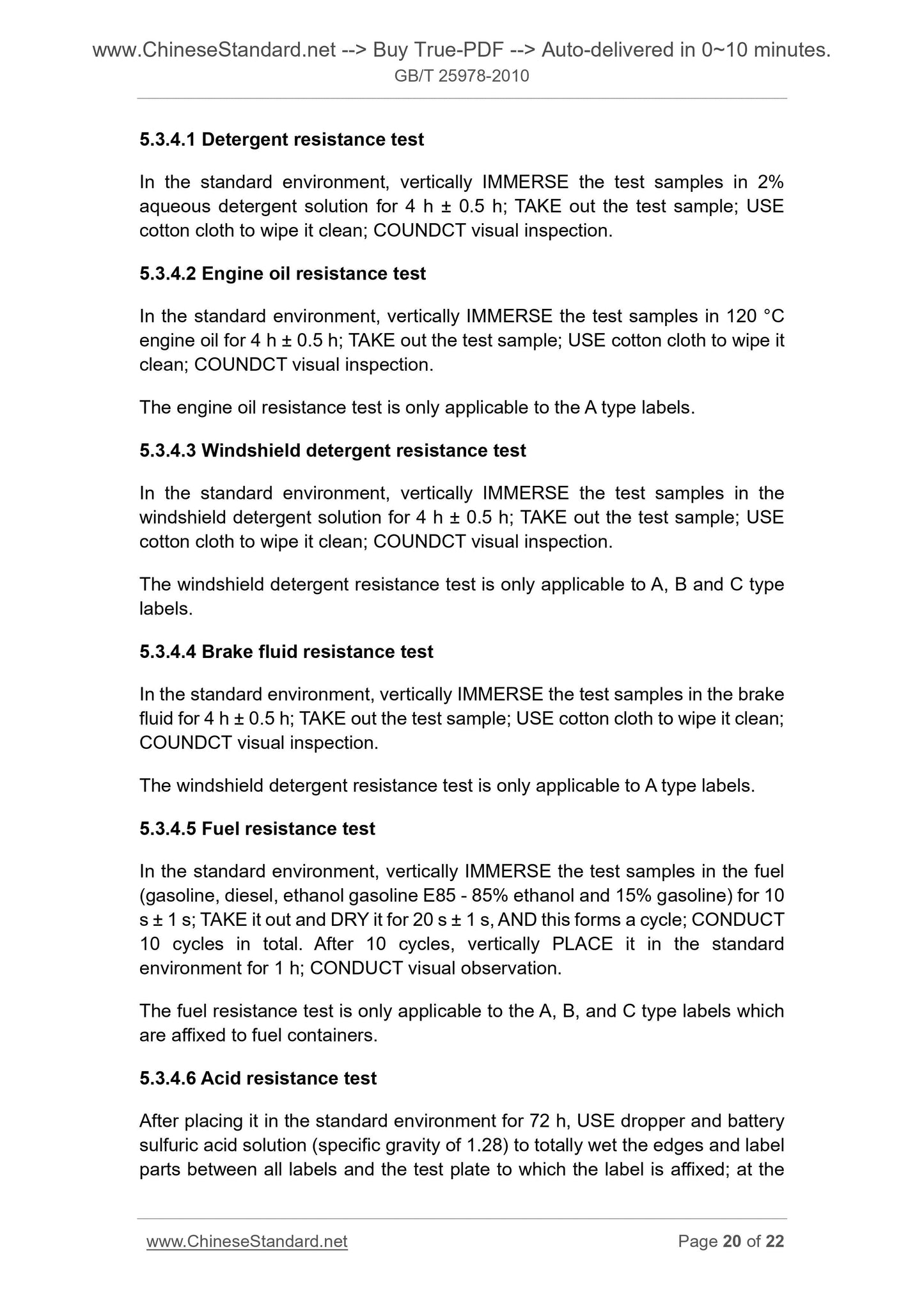1
/
of
9
PayPal, credit cards. Download editable-PDF and invoice in 1 second!
GB/T 25978-2010 English PDF (GB/T25978-2010)
GB/T 25978-2010 English PDF (GB/T25978-2010)
Regular price
$70.00
Regular price
Sale price
$70.00
Unit price
/
per
Shipping calculated at checkout.
Couldn't load pickup availability
GB/T 25978-2010: Road vehicle -- Plate and label
Delivery: 9 seconds. Download (and Email) true-PDF + Invoice.Get Quotation: Click GB/T 25978-2010 (Self-service in 1-minute)
Newer / historical versions: GB/T 25978-2010
Preview True-PDF
Scope
This standard specifies the definition, performance requirements and testmethods of plates and labels used on road vehicles for the descriptions of
vehicle information.
This standard applies to all types of plates and labels used on road vehicles for
the description of vehicle manufacturing information, warning information,
manipulation and indicative information.
This standard does not apply to the vehicle identifications directly formed on a
vehicle or vehicle body by marking, etching, casting, painting, printing, or
sewing, etc.
This standard does not apply to vehicle non-information plates and labels.
This standard does not apply to the identification of vehicles or components
used in the production, transportation or transfer of vehicles (which may be
removed prior to normal use of the vehicle).
All kinds of plates and labels used for vehicle components and assembly may
make reference to this standard.
Basic Data
| Standard ID | GB/T 25978-2010 (GB/T25978-2010) |
| Description (Translated English) | Road vehicle -- Plate and label |
| Sector / Industry | National Standard (Recommended) |
| Classification of Chinese Standard | T04 |
| Classification of International Standard | 43.020 |
| Word Count Estimation | 13,194 |
| Date of Issue | 1/14/2011 |
| Date of Implementation | 5/1/2011 |
| Quoted Standard | GB/T 250-2008; GB/T 3280-2007; GB 8410-2006; GB/T 13306-1991, |
| Regulation (derived from) | Announcement of Newly Approved National Standards 2011 No. (No. 166 overall) 1 |
| Issuing agency(ies) | General Administration of Quality Supervision, Inspection and Quarantine of the People's Republic of China, Standardization Administration of the People's Republic of China |
| Summary | This Standard specifies the use of the vehicle for explaining the definition of road signs and labels vehicle information, performance requirements and test methods. This Standard is applicable to the use of a vehicle on a road vehicle for explaining manufacturing information, warning, information, and instructions to manipulate various types of information, such as the content of tags and labels. |
Share
